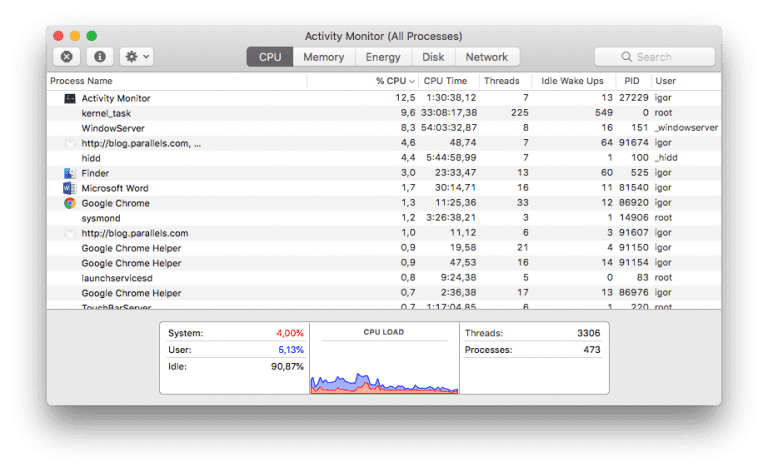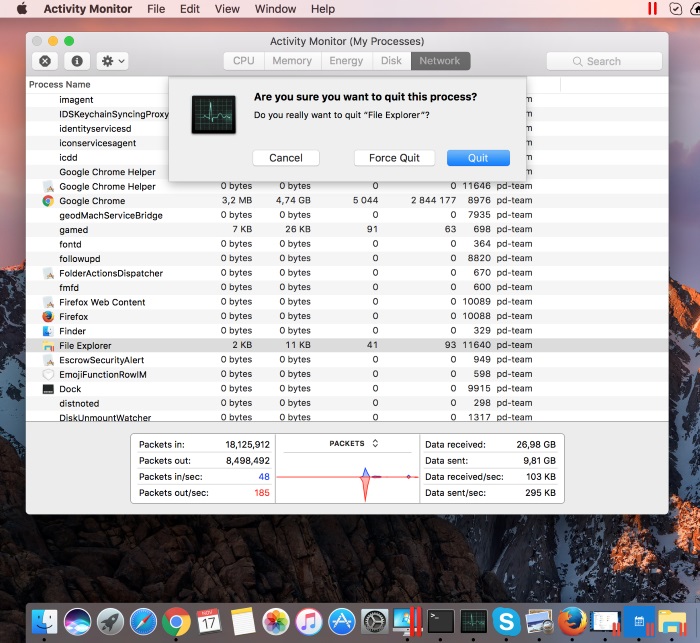

Close your computer’s lid, then press and hold down the left Shift key, the left Control key, and the right Option key along with the power button until your computer turns on.
#MAC FORCE QUIT MAC#
– On any other Mac notebook model: Unplug all external devices from your computer including displays and USB devices. Using the built-in keyboard, press and hold down the Fn key along with the left Shift key, the left Control key, and the power button until your computer turns on.
#MAC FORCE QUIT PRO#
– On a MacBook Pro without a Touch Bar and with function keys (2016 & older), unplug all external devices and turn off your computer. Using the built-in keyboard, press and hold the left or right Shift key, the left Control key, and the left Option key along with the power button until your computer turns on. – On an iMac Pro or MacBook Pro with Touch Bar and USB-C ports built in, unplug all external devices and turn off your computer. Wait at least 30 seconds, then reconnect the power cord and wait another 5 seconds. – On a desktop Mac with Thunderbolt 3 ports, unplug all external devices and disconnect the power cord. How you reset the SMC depends on what kind of Mac you have: This can be especially helpful if the issue relates to power management, fans, or sensors. If your Mac is acting up, one first step you can try is resetting its System Management Controller (SMC). Therefore, use this method only as a last resort. This will bring up the same Force Quit Applications window however, it will not give you the option to cancel out of the window as the other method does. Another way to force quit an application is to press Command + Shift + Option + Esc. This will forcibly close the application. From here, you can select the unresponsive application and click the “Force Quit” button. This will bring up the Force Quit Applications window. If this happens, you can force quit the application by pressing Command + Option + Esc on your keyboard. However, sometimes applications can get stuck and become unresponsive. This will close the application immediately. The first way, and most common way, is to simply click the red x in the upper left-hand corner of the application window. There are a couple of different ways you can close out applications on your Mac device. Let’s talk more about the above… Force quit all running applications

If none of these solutions work, you may need to get in touch with a mac certified technician! Press and hold the power button for 10 seconds, then release it and wait a few minutes before plugging it back in and trying again. To do this, shut down your computer and unplug it from the power source. If your computer still won’t shut down, you may need to reset the System Management Controller (SMC). You may also want to try restarting your computer in Safe Mode, which will disable all third-party extensions and allow you to isolate the problem. If you see any programs that say “Not Responding,” force them to quit by selecting them and clicking the “Force Quit” button at the bottom of the window. One possibility is that there are still some programs running in the background, even after you click “Quit.” To check this, open the Activity Monitor from the “Utilities” folder in your “Applications” folder. There are a few reasons why your Mac device might not be shutting down properly. Reasons why a MacBook might not shut down

#MAC FORCE QUIT HOW TO#
In this article, we’ll explore eight of the most common ones and provide you with some tips on how to fix them. Sometimes an autosave function will come to the rescue, and you can opt to have websites reopen if you have to quit your browser, but force quitting often means losing some work, so use it only as a last resort.If your MacBook is refusing to turn off, there are a few potential reasons why. Just remember that when you force quit a program on Mac, you may lose unsaved work. Then you can restart it and, ideally, get some actual work done. Rather than sitting there glaring at that rainbow-colored "spinning wheel of death," instead just use a force quit override to shut down the program. This is certainly the case when your Mac is giving you trouble with a program that's either frozen, or running so slowly that you just can't take it anymore. Sometimes in life, you just have to cut your losses and call it quits. Visit Business Insider's Tech Reference library for more stories. In addition to the keyboard shortcut, there are two other ways to force quit a troublesome program. If you want force an app or program to quit on your Mac, you can use a similar keyboard shortcut to PC's Control+Alt+Delete.įorce quitting a program will sacrifice any unsaved changes, so do it with care. If your Mac isn't working right, try force quitting programs.


 0 kommentar(er)
0 kommentar(er)
